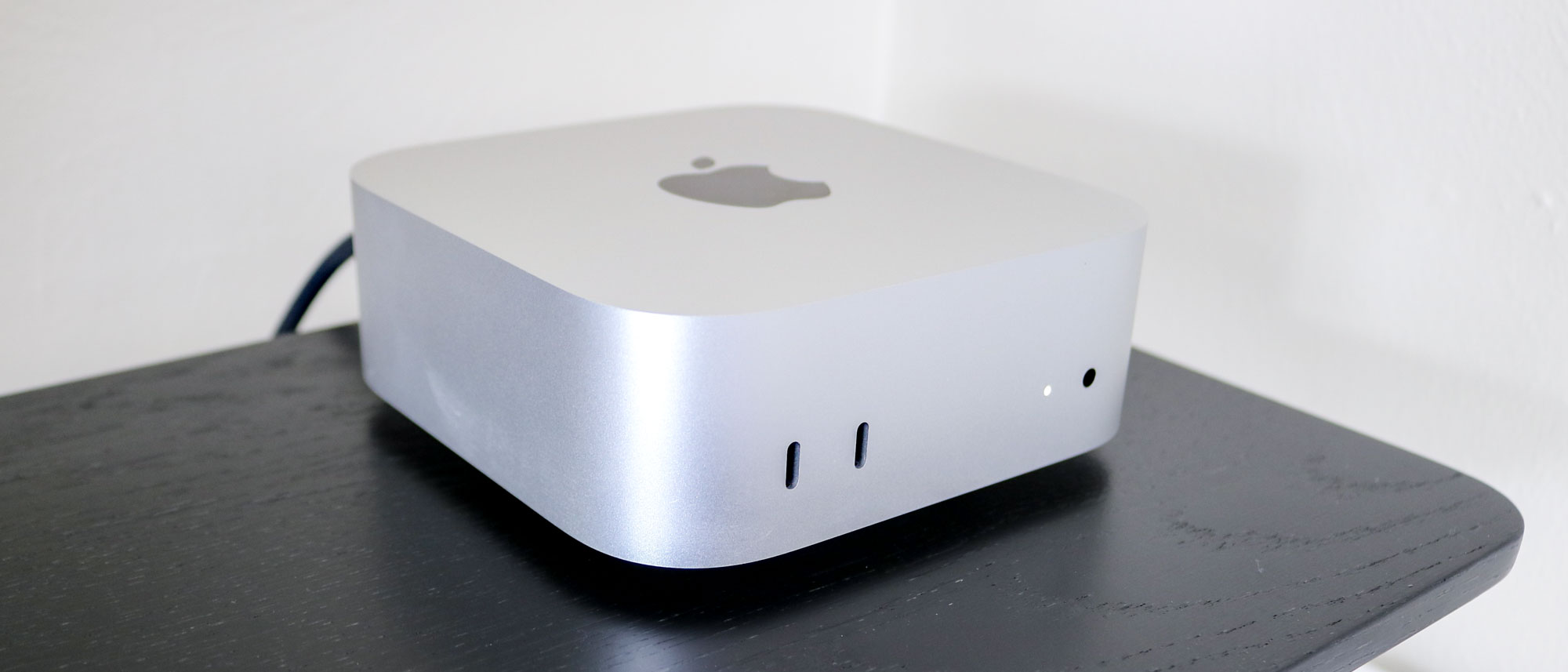Tom's Guide Verdict
The Mac mini M4 is more than an iteration on previous versions of Apple’s smallest Mac. Its redesigned chassis is absolutely tiny, the base model doubles the amount of memory that comes standard, the M4 chip is even better in a desktop and you now have ports at both the front and back of the device. If only Apple hadn’t put the power button on the bottom of the device, this would be a near perfect upgrade over the Mac mini M2.
Pros
- +
Absolutely tiny design
- +
More powerful M4 chip
- +
Easier to reach front ports
- +
16GB of RAM is now standard
- +
Now supports up to three external displays
Cons
- -
Awkward power button placement
- -
Not user-repairable or upgradable
Why you can trust Tom's Guide
The Mac mini M4 is a big step up from its predecessor with a faster chip, more memory and plenty of ports on both the front and back of the device. Its smaller size and new design are the most apparent differences at first glance, but it's the power of the M4 chip under its hood and the fact that the base model comes equipped with more RAM that really makes a difference.
Like the Mac mini M1 back in 2020, this new model revolutionizes Apple’s smallest Mac yet. There’s quite a lot to like about the Mac mini M4 but like all products, its not without its flaws. The biggest of which is Apple’s decision to put the power button underneath the device as opposed to at the rear like on previous models. If you turn your computer off every night, this will take some getting used to but having used the Mac mini M4 as my daily driver, I was able to adjust to putting it to sleep instead of shutting it down.
I think this is the best mini PC for most people that prefer macOS over Windows, and my Mac mini M4 review will help you decide if it’s right for you— or if it’s worth paying slightly over two times as much for the more powerful M4 Pro model.
Mac mini M4: Cheat Sheet
- What is it? Apple’s smallest desktop computer yet.
- Who is it for? People who want their first Mac or to upgrade to a new one without paying extra for a laptop they only plan on using at their desk.
- What does it cost? The Mac mini M4 starts at $599 while the Mac mini M4 Pro starts at $1,399 and both systems can be upgraded with additional RAM, storage and 10 gigabit Ethernet.
- What do we like? The smaller design, the three Thunderbolt 4 ports at the rear, the USB-C ports and headphone jack at the front and how the base model now comes with 16GB of RAM.
- What don’t we like? The awkwardly placed power button on the bottom of the device, that it ships with a 256GB SSD instead of something bigger and how upgrading its RAM and storage is still quite expensive.
Mac mini M4: Specs
| Header Cell - Column 0 | Mac mini M4 (as tested) | Mac mini M4 Pro |
|---|---|---|
Price | $599, £599, AU$999 | $1,399, £1,399, AU$2,199 |
CPU | M4 (10-core CPU, 10-core GPU) | M4 Pro (12-core CPU, 16-core GPU, upgradeable to 14-core CPU, 16-core GPU) |
RAM | 16GB (16-32GB) | 48GB (24-64GB) |
Storage | 512GB (256GB-2TB) | 1TB (512GB-8TB) |
Ports | 2 x USB-C, 3.5mm headphone jack (front), 3 x Thunderbolt 4/USB 4, 1 x HDMI, 1 x gigabit Ethernet (back) | 2 x USB-C, 3.5mm headphone jack (front), 3 x Thunderbolt 5/ USB 4, 1 x HDMI, 1 x gigabit Ethernet (back) |
Connectivity | Gigabit Ethernet (upgradeable to 10 gigabit), Wi-Fi 6E, Bluetooth 5.3 | Gigabit Ethernet (upgradeable to 10 gigabit), Wi-Fi 6E, Bluetooth 5.3 |
Size | 5 x 5 x 2 inches | 5 x 5 x 2 inches |
Weight | 1.5 pounds | 1.5 pounds |
Mac mini M4: The ups
The Mac mini M4 improves upon what was already a great mini PC with excellent performance, extra ports on both the front and back and a much more capable base model. Its smaller size also makes it a more compelling upgrade that takes up less space on your desk.
A truly tiny Mac
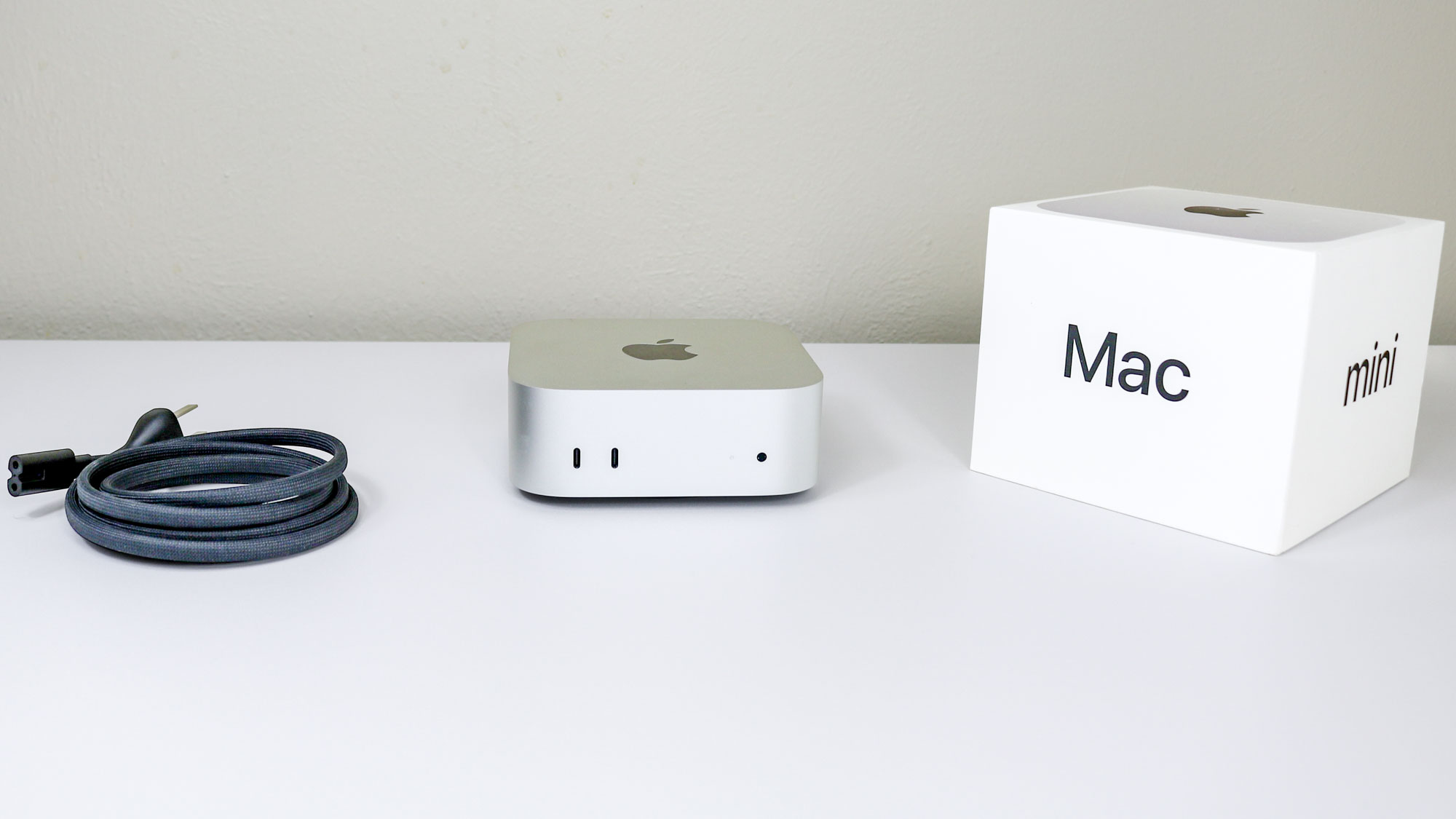
At just 5 x 5 x 2 inches, the Mac mini M4 is absolutely tiny and it easily fits in your hand. While the Mac mini M2 was wider and shorter at 7.7 x 7.7 x 1.4 inches, this completely redesigned model takes up even less space on your desk than before. Likewise, it still has a built-in power supply, so you don’t need to worry about lugging around a bulky power adapter like you do with the Acemagic F2A and almost every other Windows-based mini PC.
Besides its smaller size and slightly taller profile, which make it look more like the Mac Studio, the new Mac mini ships with Apple’s M4 chips. The base model has an M4 chip with a 10-core CPU, 10-core GPU and a 16-core Neural Engine for Apple Intelligence and other AI-related tasks while the upgraded version ships with an M4 Pro chip. The biggest upgrade though, is that 16GB of memory is the new standard for the Mac mini M4 even though it retains the same 256GB SSD for storage.
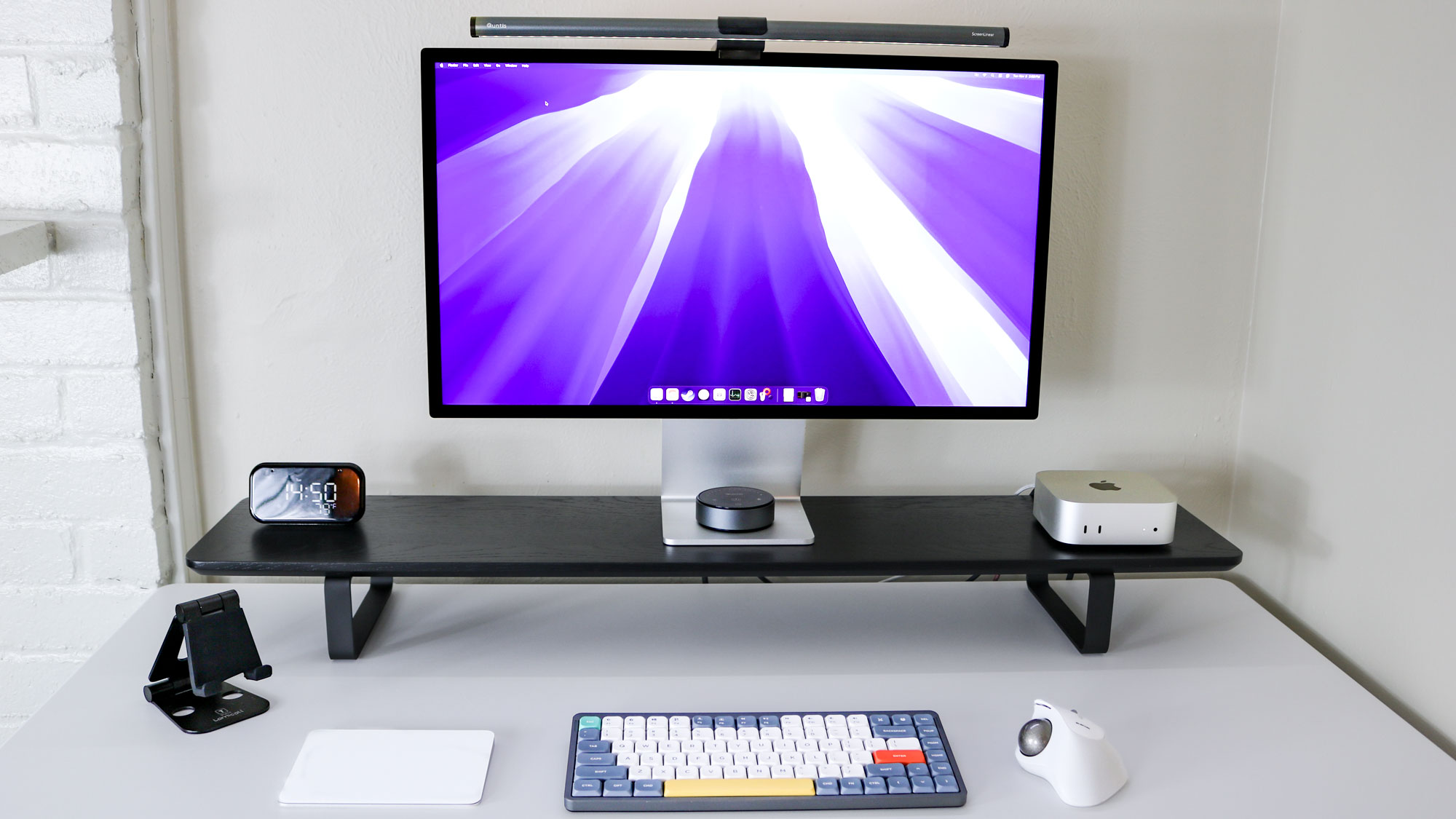
I recently spent a week with the Mac mini M2 ahead of the launch of this new model and I immediately noticed the difference moving from 8GB to 16GB of RAM. Instead of constantly worrying that I had too many browser tabs or apps opened simultaneously, the Mac mini M4 was easily able to hold up to my workflow, which mostly involves writing in Chrome and editing photos in GIMP.
Get instant access to breaking news, the hottest reviews, great deals and helpful tips.
At the same time, I didn’t notice any slowdown when opening apps or folders or changing settings thanks to Apple’s more powerful M4 chip, though macOS Sequoia likely helped here too. Everything just works and works well, which is the kind of experience one expects from a Mac.
| Header Cell - Column 0 | Mac mini M4 | Mac mini M4 Pro |
|---|---|---|
Geekbench 6.3 single-core | 3838 | 3880 |
Geekbench 6.3 multi-core | 14838 | 22661 |
BlackMagic Disk Speed (read) | 3437.8 | 6351.8 |
BlackMagic Disk Speed (write) | 3017.3 | 5133.8 |
Handbrake (Mins:Secs) | 4:42 | 2:47 |
Ports where you need them
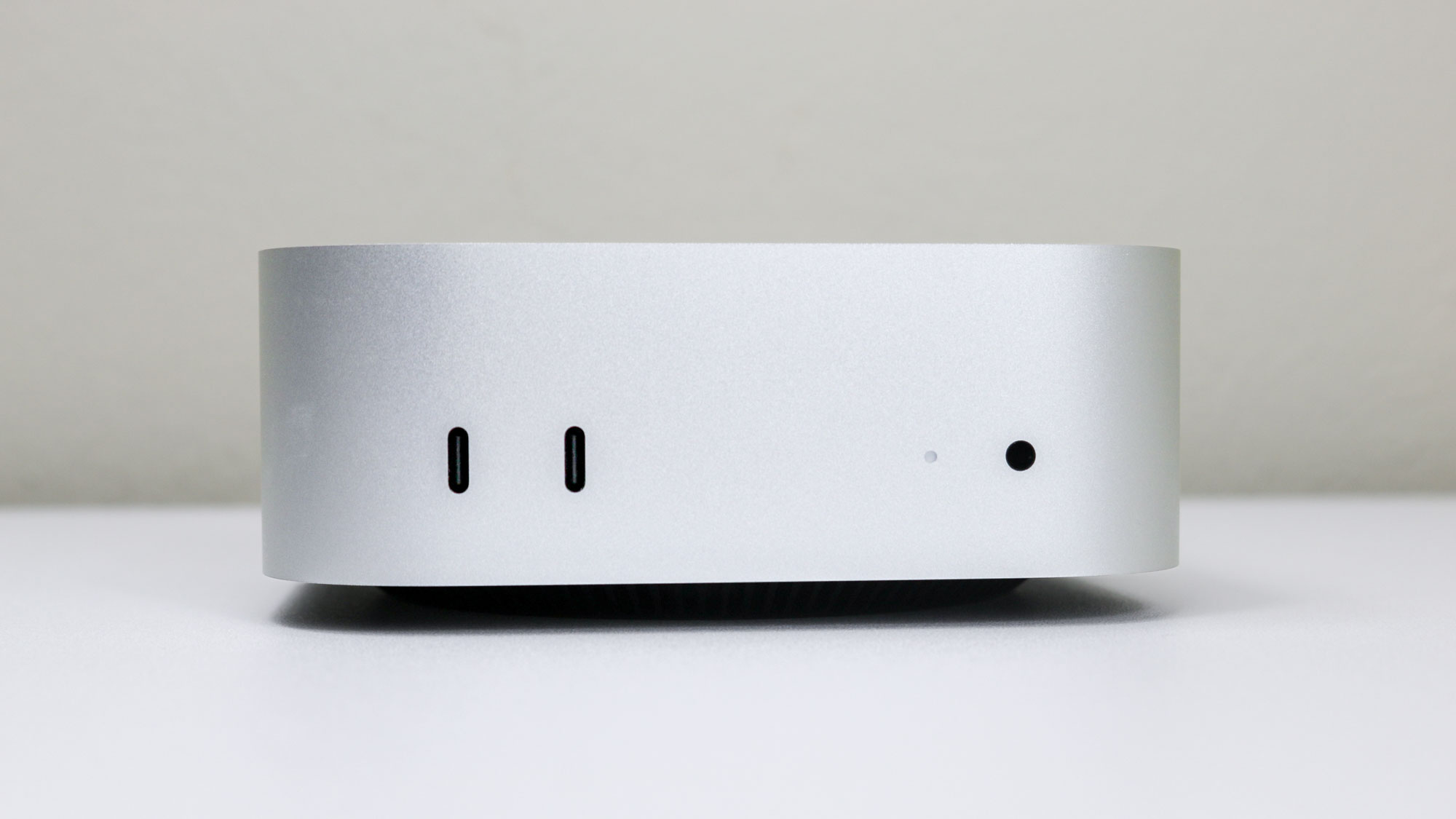
I thought Apple might do something similar to the Mac mini M2 with this new model when it came to ports. However, both the Mac mini M4 and the Mac mini M4 Pro have the same number of ports. The big difference is that the base model comes equipped with Thunderbolt 4 ports while the pro model has Thunderbolt 5 ports.
While previous iterations of the Mac mini didn’t have any front ports whatsoever, the Mac mini M4 now has two USB-C ports and a headphone jack where you can easily reach them. There isn’t an SD card reader like on the front of the Mac Studio, but the Mac mini is more of a general use computer after all.
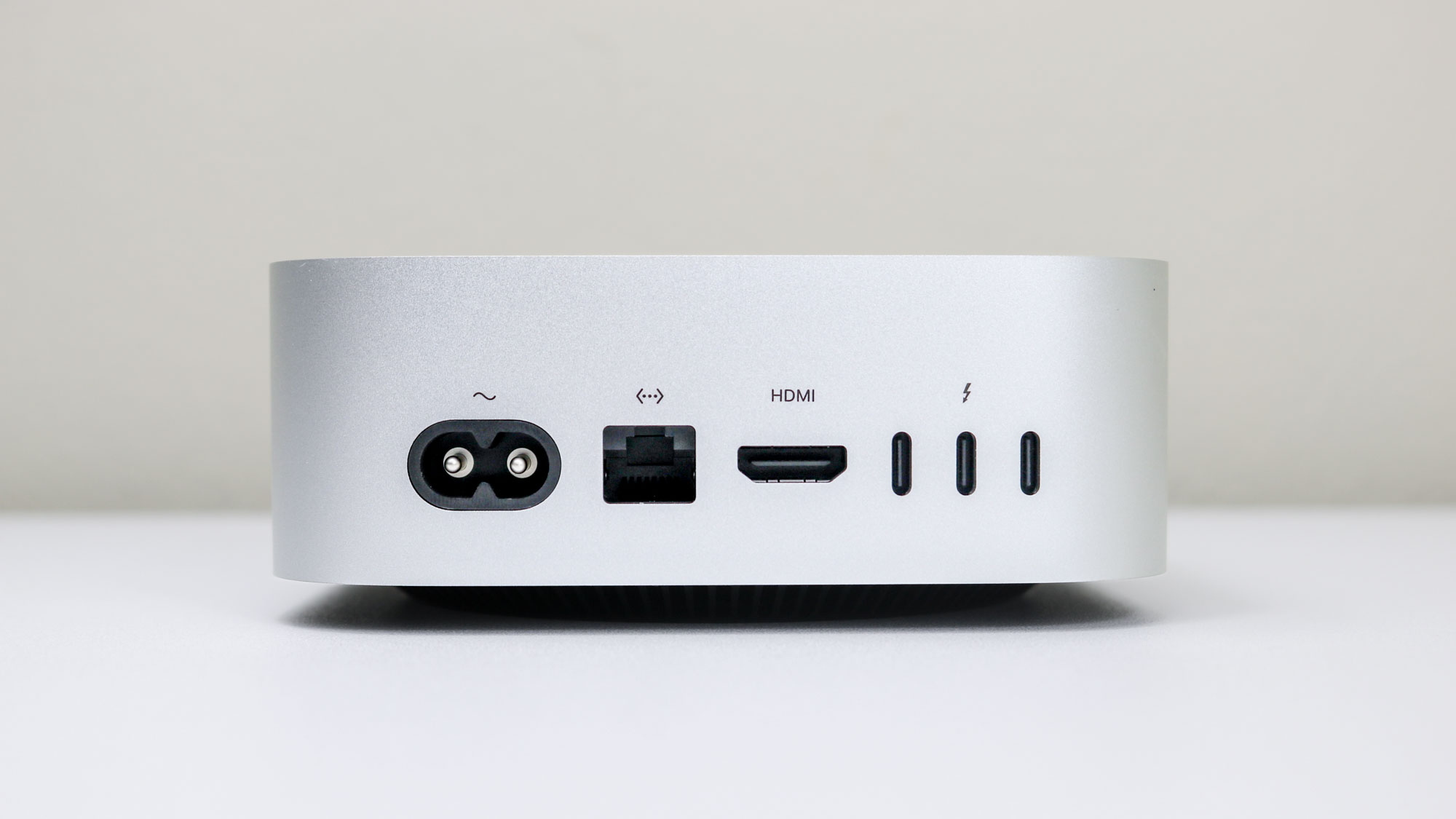
On the back of the Mac mini M4, there isn’t a single USB-A port to be found. Instead, you get three Thunderbolt 4 ports along with an HDMI port and a gigabit Ethernet port (which can be upgraded to 10 gigabit). This more streamlined approach to ports is a welcome change since all of Apple’s devices now use the same connector. I would have liked one or two USB-A ports for third-party accessories but I’m a bit of an outlier here.
A multitasker’s delight
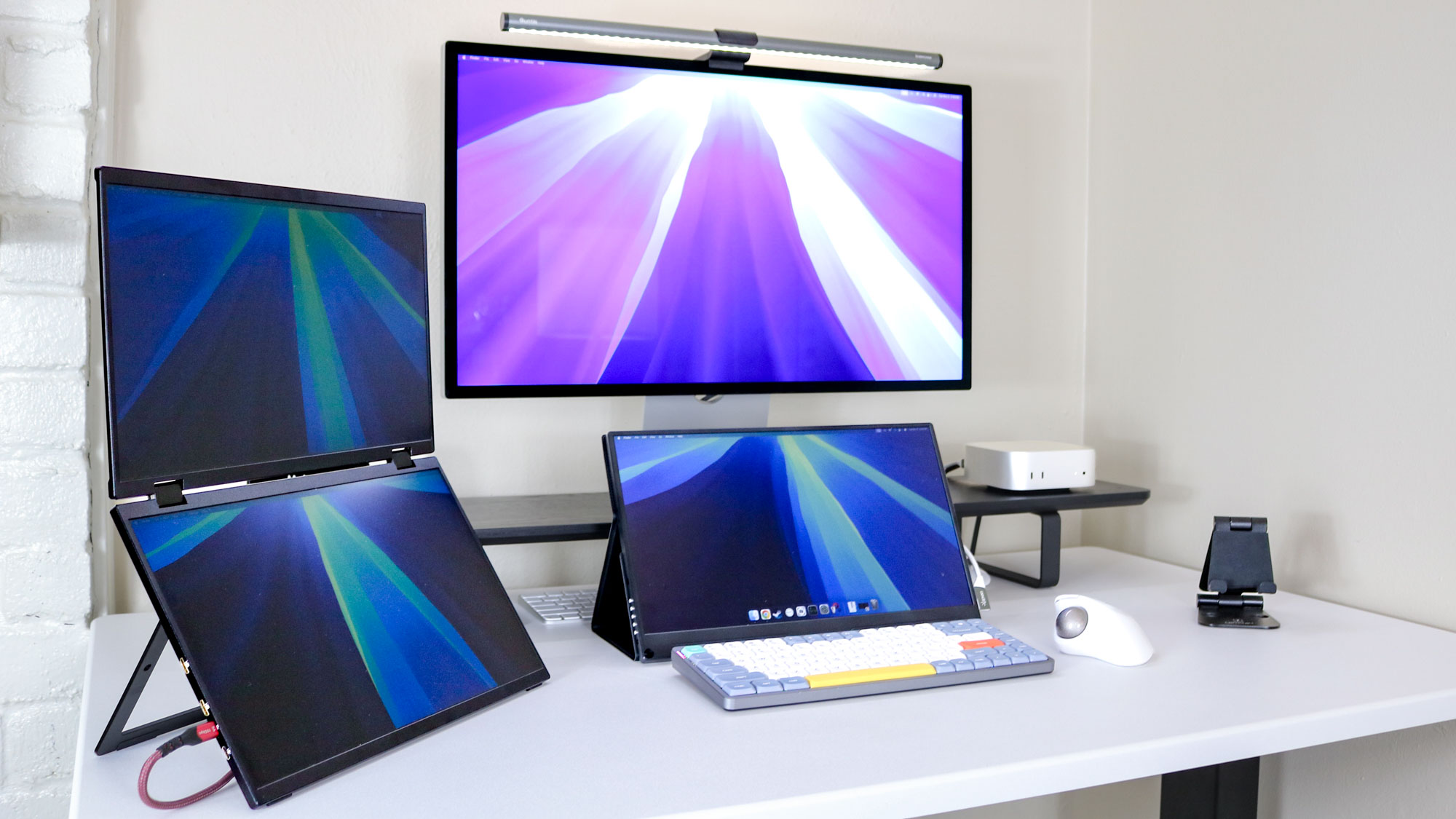
Just like with the port selection, Apple has standardized how many external displays you can use with the Mac mini M4 and Mac mini M4 Pro. Both machines support up to three external displays, but the resolutions you can run them at are different — more on that in a bit.
In my own testing, I had the Mac mini M4 connected over Thunderbolt 4 to the Studio Display that Apple sent over with it. Since I prefer a multi-monitor setup, I added a portable monitor with a touchscreen underneath it which really helped when multitasking. To see what the Mac mini M4 was really capable of though, I added a dual-screen portable monitor next to it. I did have to download a DisplayLink driver to get both of its screens working but when I did, I had four displays at my disposal instead of the standard three. Both of these portable monitors were also powered by the Mac mini M4 and I didn’t need to plug them into an external power adapter.
With the Mac mini M4, you can run two 6K displays at a 60Hz refresh rate using Thunderbolt and a third 4k display at 60Hz over HDMI. You can also run a dual monitor setup with one 5K display and one 8K display at 60Hz over Thunderbolt or swap one out for a 4k display with a higher 240Hz refresh rate. Meanwhile, the Mac mini M4 Pro can run three 6K displays at 60Hz or one 6K display with either an 8K display at 60Hz or a 4K display at 240Hz in a dual monitor setup. Professionals with higher resolution monitors will appreciate all of these options, but they are more likely to go with the Mac Studio or Mac Pro over the Mac mini anyways.
Clearing your gaming backlog (mostly)
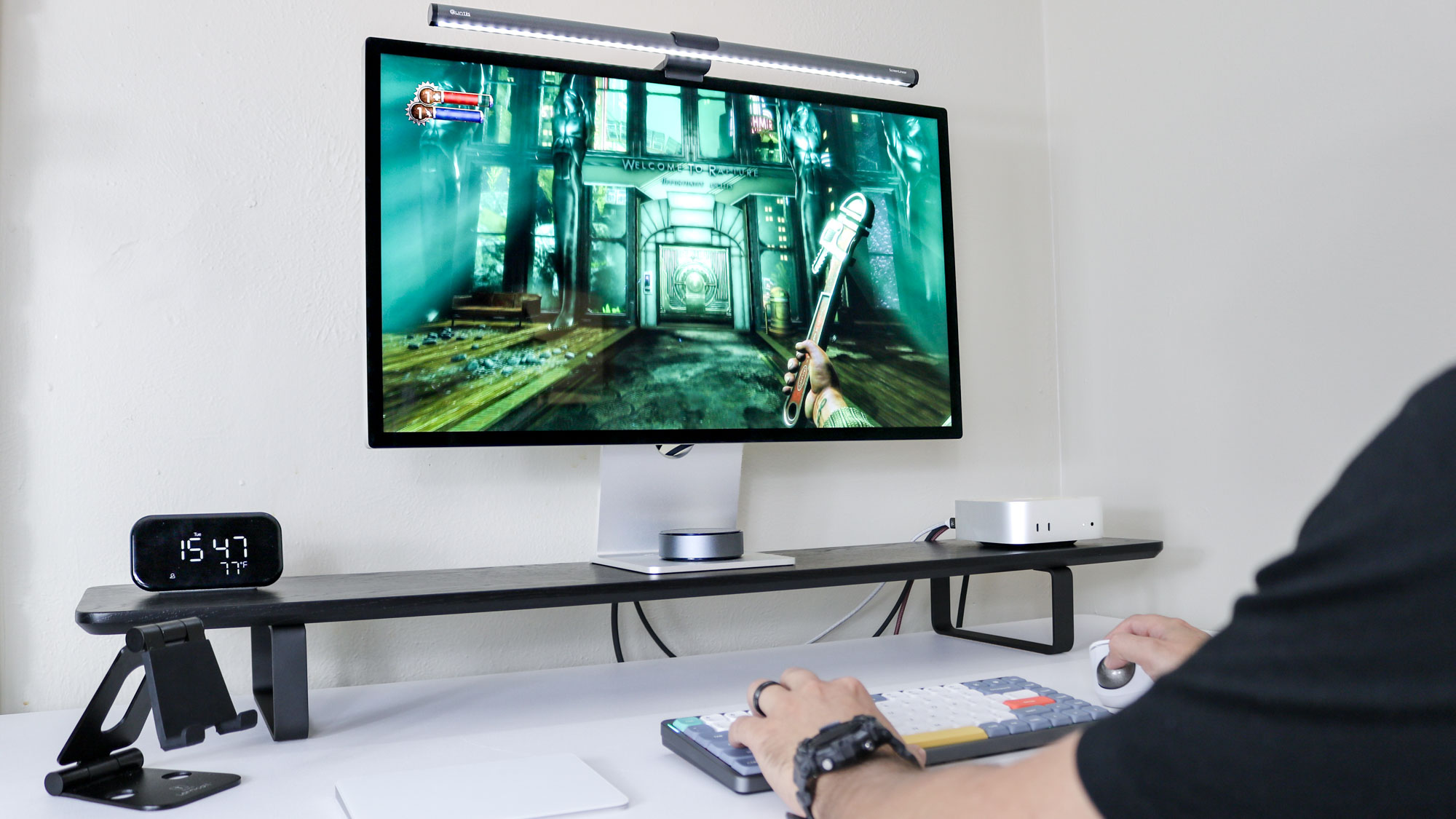
If you want to play the latest games at great framerates, you’re still better off buying one of the best gaming PCs over the Mac mini M4 or another more powerful Mac. Still though, Apple has made a lot of headway when it comes to gaming on a Mac in recent years.
While you certainly won’t be able to play everything, a number of older games performed quite well in our test lab. For instance, Shadow of the Tomb Raider ran at 40 fps while Civilization VI nearly reached 60 fps on the base Mac mini in our tests. Performance was even better on the Mac mini M4 Pro with both of these games running at over 80 fps.
As I often test out gaming-focused mini PCs like the Asus ROG NUC 970 and the AtomMan G7 PT for work, I have a large library of the best PC games on Steam. After downloading Steam onto the Mac mini M4, I opened my library to find that most of my games that do work on Mac are a bit older.
To test out its gaming performance, I downloaded a few games and after experiencing issues with several of the best PC game controllers, I decided to use my trackball mouse and a keyboard to play through the remastered version of 2007’s Bioshock. It ran well on the Mac mini M4 and if, like me, you have a big backlog of PC games, you’ll likely be able to play through many of them on the base Mac mini. Don’t forget that Xbox GamePass and other cloud gaming services work on Mac too though.
| Header Cell - Column 0 | Mac mini M4 | Mac mini M4 Pro |
|---|---|---|
Borderlands 3 | 25.10 | 44.62 |
Shadow of the Tomb Raider | 40 | 83 |
Sid Meier's Civilization VI: Gathering Storm | 52.48 | 89.310 |
Total War: Warhammer III | 24.6 | 46.1 |
Mac mini M4: The downs
The Mac mini M4 is certainly an improvement over its predecessor but it’s not without its downsides. Namely, its oddly placed power button and the fact that optional RAM and storage upgrades still cost significantly more compared to the competition.
Hard pressed for power
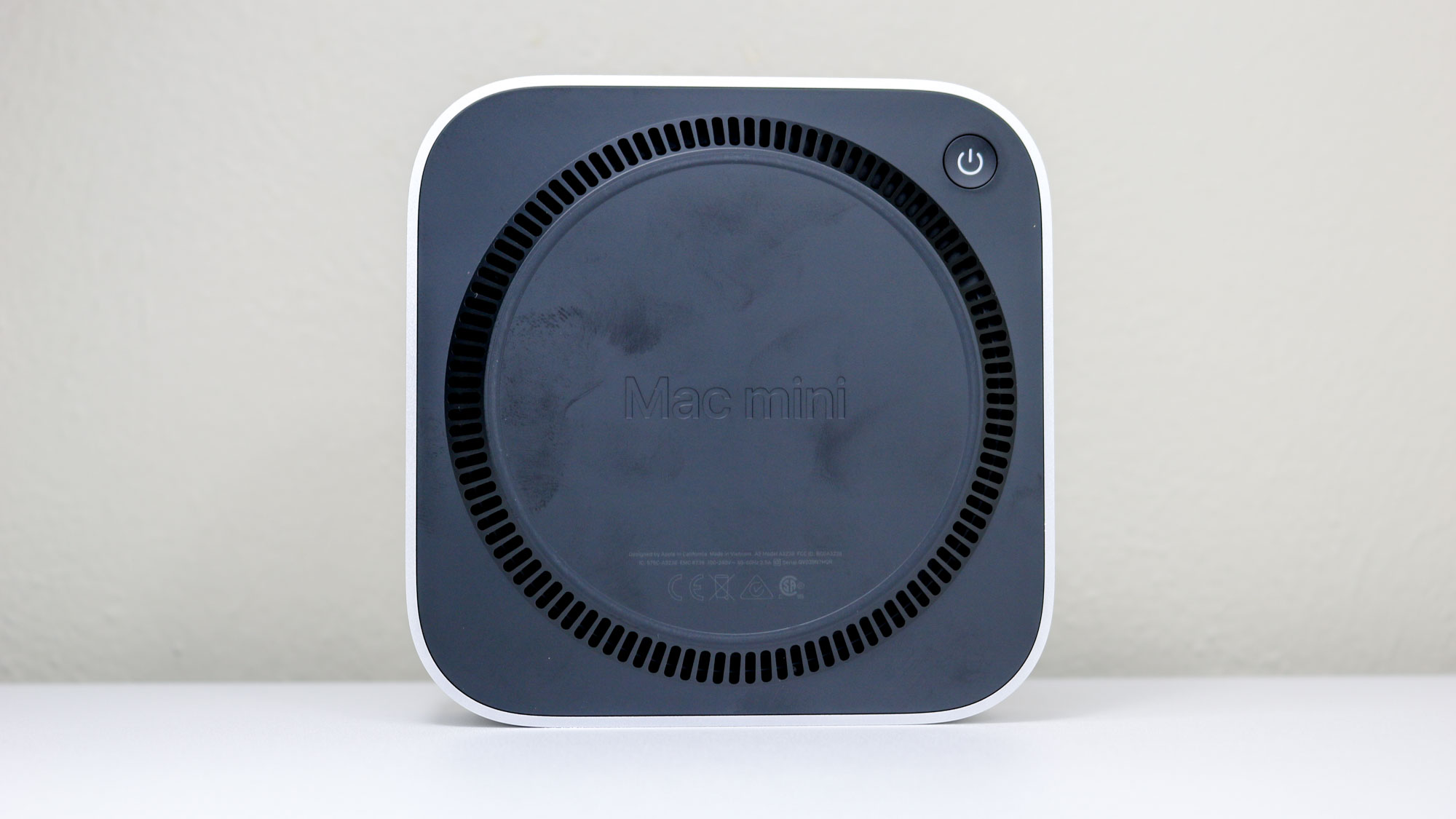
If you rarely shut off your computer, then the Mac mini M4 could be the perfect upgrade over the Mac mini M2. You see, unlike with its predecessor where the power button was on the back right side, Apple decided to put the power button on the bottom of this new Mac mini.
Both are less than ideal but at least with the Mac mini M2, its placement was justified since the power button is out of the way — yet still reachable — and less likely to be pressed accidentally.
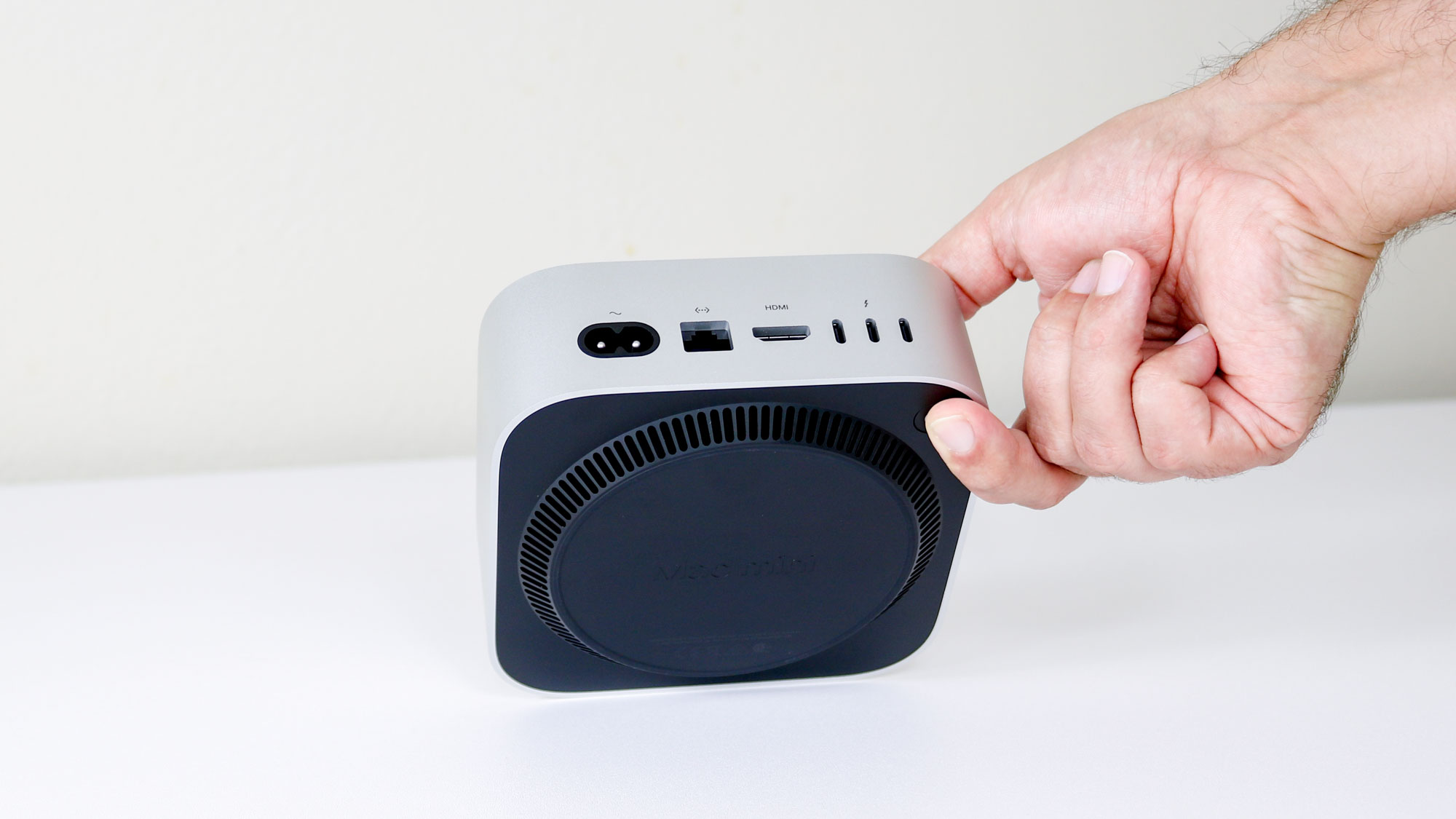
With the Mac mini M4 though, you run into a different problem entirely as its power button is completely unreachable without lifting the computer up off your desk. There is a cooling vent underneath the computer that lifts its aluminum unibody case up slightly. However, the gap between it and your desk is too small to stick a finger underneath to press the power button.
Fortunately, the 3D printing community is already developing workarounds for the power button’s awkward placement and I can almost guarantee that Mac mini accessory makers will devise their own clever ways to solve this problem.
It’s a shame though because if the Mac mini M4’s cooling vent was just slightly taller, reaching the power button wouldn’t be an issue at all. The M4 chip that powers the device is designed to use less power though, especially in sleep mode, so leaving your Mac mini on all the time shouldn’t use that much energy. It just takes some getting used to.
Upgrades don’t come easy
Although the Mac mini M4 now comes equipped with 16GB of RAM by default, Apple hasn’t changed how it prices RAM and storage upgrades at all. It still costs an extra $200 (£200, AU$300) to move up to the next tier with either.
Once you upgrade the Mac mini M4 with 24GB of RAM and a 512GB SSD, you're looking at a $999 (£999, AU$1,599) purchase. At that point, you might as well spend a bit extra and go with the base model of the Mac mini M4 Pro at $1,399 (£1,399, AU$2,199) which gets you these upgrades as well as the faster M4 Pro chip with a 12-core CPU and a 16-core GPU.
Like with most other Apple products these days, you can’t upgrade them on your own or after you’ve purchased them. This means you’re stuck with what you bought originally. Thankfully, the Mac mini M4 comes with enough RAM that unless you’re doing a lot of video or photo editing or running complex AI models locally, you won’t need to upgrade to a higher tier or go with the Mac mini M4 Pro.
Mac mini M4: Verdict
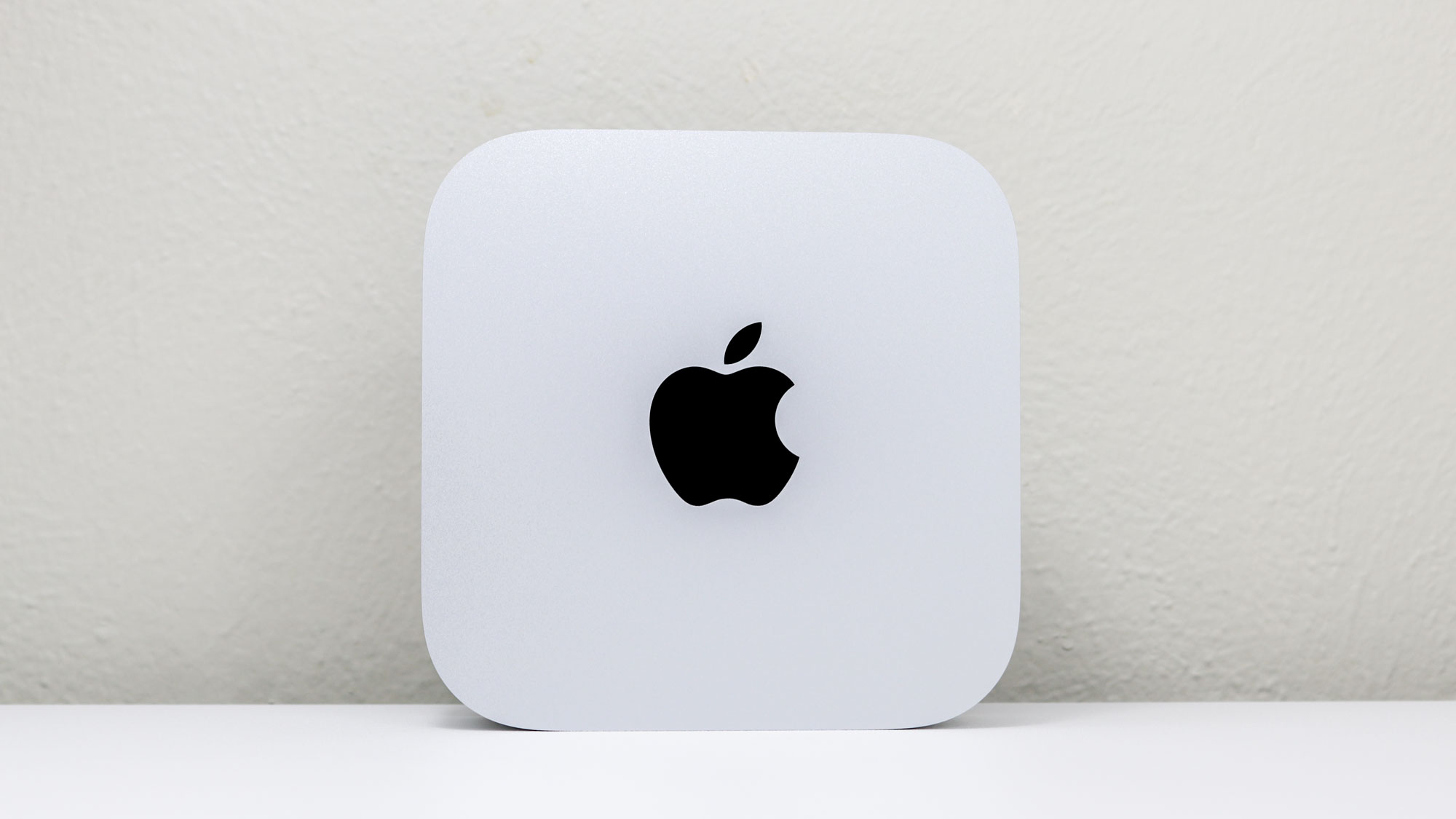
The Mac mini M4 is a beautifully designed mini PC and its smaller size will likely be a welcome addition on most desks. Not only do you now get ports in the front as well as in the back, they all use the same connector. The base model of the Mac mini M4 also now comes with 16GB of RAM, which is more than enough for most users.
Having a power button on the back of the device instead of the bottom would have made a lot more sense. Still, I’ve been using the Mac mini M4 as my daily driver for almost a week now and as someone who turns off their desktop computer every night, I’ve managed to acclimate to this change. Cheaper RAM and storage upgrades would have been nice too, but Apple redesigned the Mac mini, not how it prices upgrades.
The Mac mini M4 is an excellent mini PC and besides being the smallest, it’s also the most powerful one Apple has released yet. Now I’m looking forward to seeing what the company does with the next version of the Mac Studio.

Anthony Spadafora is the managing editor for security and home office furniture at Tom’s Guide where he covers everything from data breaches to password managers and the best way to cover your whole home or business with Wi-Fi. He also reviews standing desks, office chairs and other home office accessories with a penchant for building desk setups. Before joining the team, Anthony wrote for ITProPortal while living in Korea and later for TechRadar Pro after moving back to the US. Based in Houston, Texas, when he’s not writing Anthony can be found tinkering with PCs and game consoles, managing cables and upgrading his smart home.
